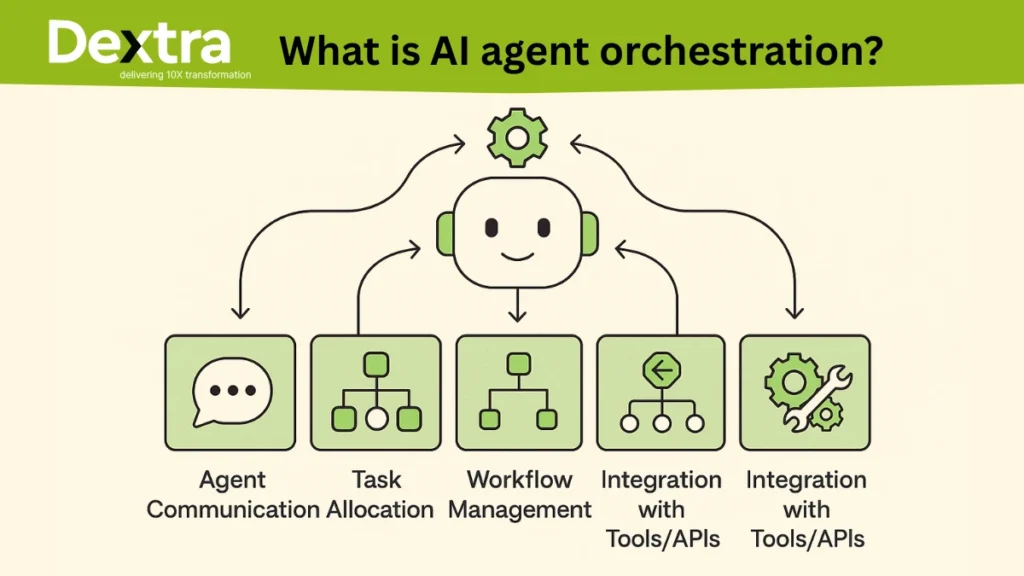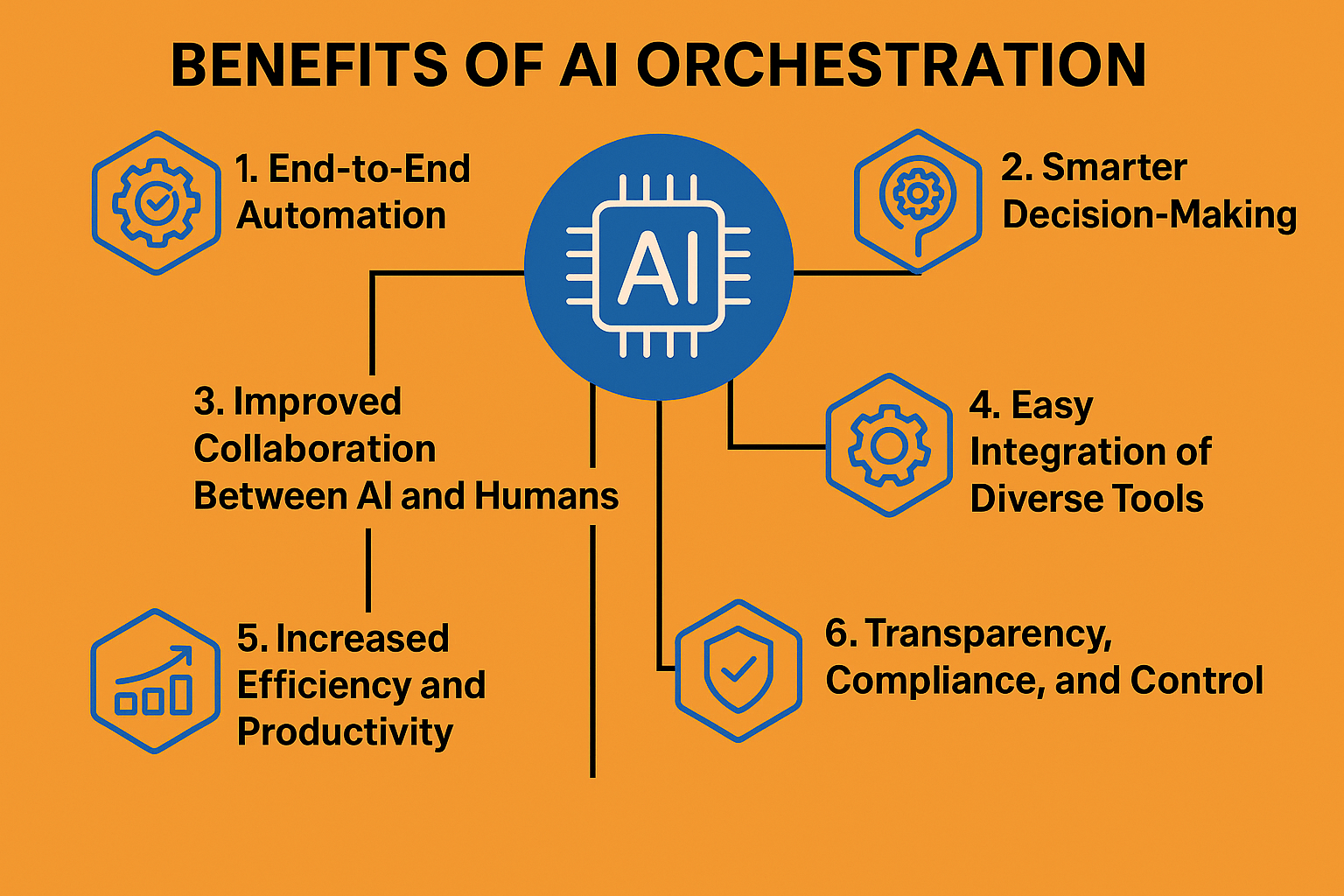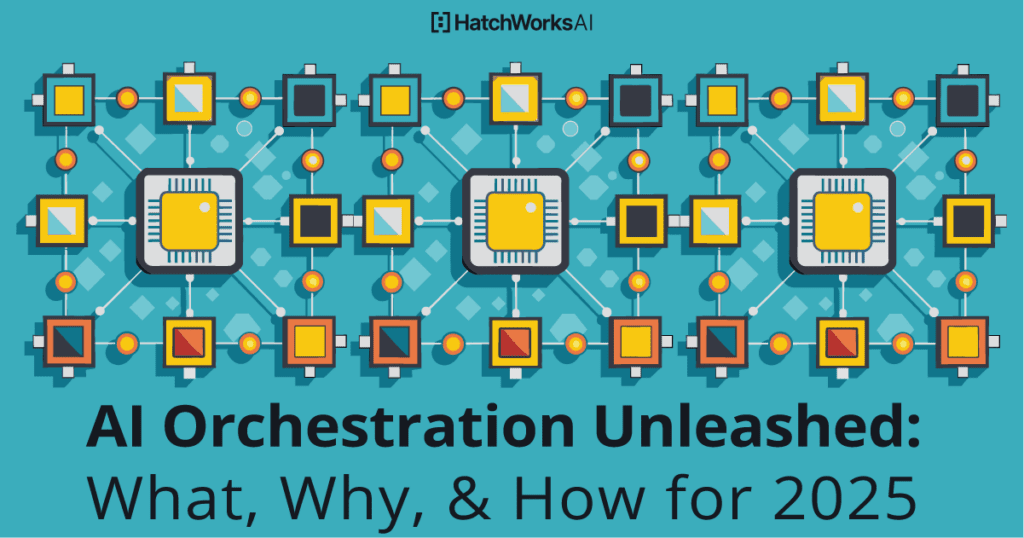AI Orchestration
No tools found in showcase directive
Debug Info
json
{
"name": "tool-showcase",
"toolPaths": [],
"nodeChildren": [
{
"type": "paragraph",
"children": [
{
"type": "link",
"url": "/toolkit/ai-toolkit/agentic-ai/agentic-workspaces/rightbrain-ai",
"data": {
"hProperties": {
"data-internal-link": ""
}
},
"children": [
{
"type": "text",
"value": "Rightbrain AI"
}
]
},
{
"type": "text",
"value": "\n"
},
{
"type": "link",
"url": "/toolkit/ai-toolkit/ai-programming-frameworks/minions",
"data": {
"hProperties": {
"data-internal-link": ""
}
},
"children": [
{
"type": "text",
"value": "MinionS"
}
]
}
],
"position": {
"start": {
"line": 2,
"column": 1,
"offset": 17
},
"end": {
"line": 3,
"column": 65,
"offset": 162
}
}
}
]
}(2025-08-08T12:22.662Z)
Perplexity Query
(2025-08-08T12:22
.662Z)
Question:
Write a comprehensive one-page article about "AI Orchestration".
Model: sonar-pro
Response from sonar-pro:
AI Orchestration: The Conductor of Connected Intelligence
Artificial Intelligence (AI) Orchestration is the strategic coordination, integration, and automated management of multiple AI models, systems, data flows, and computational resources to create unified, efficient, and scalable AI-powered solutions.
[vo3ced]
[z0rdad]
[j6f3x2]
As organizations embrace increasingly complex AI ecosystems, orchestration has become vital for turning disconnected tools into cohesive, value-generating assets. In an era where businesses leverage several types of AI for everything from customer service to predictive analytics, orchestrating these elements is critical to achieving optimal outcomes and unlocking new opportunities.
[vo3ced]
[o1bwul]

Understanding AI Orchestration
At its core, AI orchestration acts like the conductor of a symphony, ensuring each "musician" (AI model, tool, or data pipeline) plays in harmony to deliver a seamless result.
[z0rdad]
[o1bwul]
[j6f3x2]
Unlike standalone AI applications—such as an isolated chatbot or image recognition tool—AI orchestration brings together discrete components, facilitating communication, collaboration, and data sharing between them.
[o1bwul]
For example, in a retail setting, an orchestrated AI solution might integrate a recommendation engine, inventory forecasting, and customer support bots, keeping each updated with real-time data as customers interact with the brand.
Consider a healthcare provider deploying AI orchestration: patient data is ingested and pre-processed by one AI model, then passed to diagnostic engines, which in turn trigger appointment scheduling bots and send follow-up reminders. Through seamless orchestration, this AI ecosystem automates complex, multi-step patient journeys, reducing manual interventions and minimizing errors.
[vo3ced]
[z0rdad]


Practical use cases of AI orchestration include:
- Manufacturing optimization, integrating real-time sensor data analysis, predictive maintenance models, and autonomous robotics for streamlined operations. [z0rdad]
- Financial fraud detection, combining data aggregation, pattern recognition, and alert generation across multiple data sources. [8gjrzq]
Benefits and Applications
 AI orchestration delivers multiple advantages to organizations aiming to scale and innovate:
AI orchestration delivers multiple advantages to organizations aiming to scale and innovate:- Improved Customer Experience: Orchestrated AI ensures personalized, consistent engagement across channels, increasing satisfaction and loyalty. [vo3ced]
- Resource Optimization: Balances computational loads and prevents bottlenecks, optimizing infrastructure costs and response times. [z0rdad]
- Stronger Security and Governance: Centralizes oversight to ensure compliance, auditability, and data protection throughout AI processes. [8gjrzq]
- Faster Innovation: Allows teams to experiment and deploy new AI capabilities rapidly within an existing framework, accelerating time-to-value. [vo3ced]
However, challenges persist:
- Integrating legacy systems and diverse data sources requires robust design and ongoing maintenance. [j6f3x2]
- The need for specialized orchestration tools and talent can increase upfront complexity and costs. [z0rdad]
- As orchestrated AI handles sensitive data, security and regulatory compliance are ongoing priorities. [8gjrzq]

Current State and Trends
AI orchestration is moving from niche deployments to mainstream adoption, particularly as enterprises build platforms powered by large language models (LLMs) and generative AI.
[vo3ced]
[j6f3x2]
Leading technology companies—including IBM,
[j6f3x2]
Google, and Microsoft—and specialized vendors such as Teneo
[vo3ced]
are investing in orchestration platforms that automate the end-to-end lifecycle of AI applications: design, deployment, monitoring, and improvement.
Recent trends highlight the integration of orchestration with cloud-native technologies, enabling scalable AI services on demand, and the growing focus on enterprise-wide AI governance. Companies also leverage orchestration for “AI at the edge,” coordinating analytics and inference across distributed devices in real time.
[z0rdad]
[j6f3x2]
[IMAGE 3: AI Orchestration future trends or technology visualization]
Future Outlook
Looking ahead, AI orchestration will become foundational for companies seeking to leverage next-generation AI, from autonomous agents that carry out complex business processes to industry-wide AI ecosystems spanning supply chains.
[vo3ced]
[o1bwul]
Advances in orchestration tooling—especially incorporating self-healing, explainability, and compliance automation—promise even greater resilience, agility, and trust in AI systems.
[j6f3x2]
As technology matures, orchestration will be key in maximizing the synergy of diverse AI capabilities, driving transformative breakthroughs across industries.
 In summary, AI orchestration is reshaping how enterprises deploy and manage AI at scale, shifting from isolated tools to integrated ecosystems. Organizations that master orchestration will lead in innovation, customer engagement, and operational excellence in the age of connected intelligence.
In summary, AI orchestration is reshaping how enterprises deploy and manage AI at scale, shifting from isolated tools to integrated ecosystems. Organizations that master orchestration will lead in innovation, customer engagement, and operational excellence in the age of connected intelligence.
 In summary, AI orchestration is reshaping how enterprises deploy and manage AI at scale, shifting from isolated tools to integrated ecosystems. Organizations that master orchestration will lead in innovation, customer engagement, and operational excellence in the age of connected intelligence.
In summary, AI orchestration is reshaping how enterprises deploy and manage AI at scale, shifting from isolated tools to integrated ecosystems. Organizations that master orchestration will lead in innovation, customer engagement, and operational excellence in the age of connected intelligence.Citations
[vo3ced] 2025, Jun 16. AI Orchestration Across Channels: The Complete Guide to .... Published: 2025-04-22 | Updated: 2025-06-16
[z0rdad] 2025, Jul 24. What Is AI Orchestration?. Published: 2025-06-29 | Updated: 2025-07-24
[8gjrzq] 2025, Apr 06. AI Orchestration: Unlocking the Full Potential of Your AI .... Published: 2025-04-06 | Updated: 2025-04-06
[o1bwul] 2025, Aug 05. AI Orchestration Unleashed: What, Why, & How for 2025. Published: 2024-04-16 | Updated: 2025-08-05
[j6f3x2] 2025, Jun 25. What is AI Orchestration? | IBM. Published: 2025-01-23 | Updated: 2025-06-25